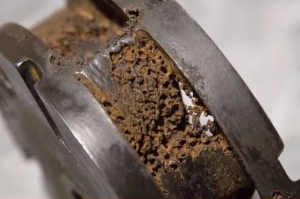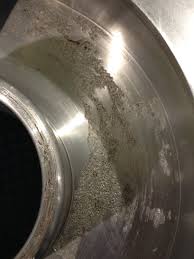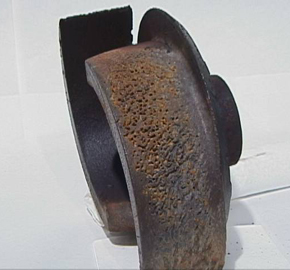Pump Cavitations Detection
Pump Cavitations Detection
Our Product: We render our services in ‘Detecting Cavitations in Large Pumps’.
(It is always better to use, combination of NDT methods to confirm steam trap performance, like combination of Vibration Analysis, and Ultrasound Measurements. Please see ‘Pumps in Condition Monitoring’ for it.)
By using an ultrasonic detector in contact mode, we can isolate the pump vanes and listen for small air pocket explosions. By placing the contact probe on the housing of the pump and adjusting amplification we can filter down shaft noise. With experience, our expert will quickly be able to identify when pump cavitation is present.
Our Product: We render our services in ‘Detecting Cavitations in Large Pumps’.
(It is always better to use, combination of NDT methods to confirm steam trap performance, like combination of Vibration Analysis, and Ultrasound Measurements. Please see ‘Pumps in Condition Monitoring’ for it.)
By using an ultrasonic detector in contact mode, we can isolate the pump vanes and listen for small air pocket explosions. By placing the contact probe on the housing of the pump and adjusting amplification we can filter down shaft noise. With experience, our expert will quickly be able to identify when pump cavitation is present.
Preface:
Cavitation in general terms is used to describe the behavior of voids or bubbles in liquid. Any time a flowing liquid falls below its vapor pressure, vapor bubbles can form. If the flowing liquid is then subjected to pressures above the vapor pressure, these bubbles can implode causing damage, which is called cavitation. Pump cavitation is usually divided into two classes of behavior: inertial (or transient) cavitation, and non-inertial cavitation.
The cause of cavitation in pumps is usually due to insufficient NPSH (Net Positive Suction Head) energy on the suction side of the pump. This can be caused by:
Cavitation in general terms is used to describe the behavior of voids or bubbles in liquid. Any time a flowing liquid falls below its vapor pressure, vapor bubbles can form. If the flowing liquid is then subjected to pressures above the vapor pressure, these bubbles can implode causing damage, which is called cavitation. Pump cavitation is usually divided into two classes of behavior: inertial (or transient) cavitation, and non-inertial cavitation.
The cause of cavitation in pumps is usually due to insufficient NPSH (Net Positive Suction Head) energy on the suction side of the pump. This can be caused by:
-
Having the pump at too high of a distance above the fluid source
-
Having too small of a diameter of suction pipe
-
Having too long of a distance of suction pipe
-
Having too many fittings on the suction pipe
-
Handling a liquid with a low vapor pressure
-
Running the pump too fast
 |
 |
 |
The end result of cavitation is the collapse of the vapor bubbles inside the pump, which can cause several problems. The first problem is a reduction in the pumping capacity of the pump. Cavitation also causes damage to the pump.
If the pump is cavitating, it will typically vibrate, deliver less flow and make a noise that sounds like marbles going through the pump. The sound may start out at a low level and increase in intensity over time as material is chipped away and the surface of the parts becomes rougher.
If the pump is cavitating, it will typically vibrate, deliver less flow and make a noise that sounds like marbles going through the pump. The sound may start out at a low level and increase in intensity over time as material is chipped away and the surface of the parts becomes rougher.
